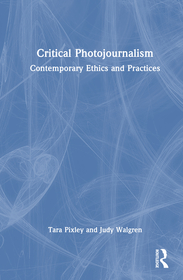
Adaptation and the Edge Effects of Latin American Cultures
Series: Palgrave Studies in Adaptation and Visual Culture;
- Publisher's listprice EUR 160.49
-
66 563 Ft (63 393 Ft + 5% VAT)
The price is estimated because at the time of ordering we do not know what conversion rates will apply to HUF / product currency when the book arrives. In case HUF is weaker, the price increases slightly, in case HUF is stronger, the price goes lower slightly.
- Discount 12% (cc. 7 988 Ft off)
- Discounted price 58 575 Ft (55 786 Ft + 5% VAT)
Subcribe now and take benefit of a favourable price.
Subscribe
66 563 Ft

Availability
Not yet published.
Why don't you give exact delivery time?
Delivery time is estimated on our previous experiences. We give estimations only, because we order from outside Hungary, and the delivery time mainly depends on how quickly the publisher supplies the book. Faster or slower deliveries both happen, but we do our best to supply as quickly as possible.
Product details:
- Publisher Springer Nature Switzerland
- Date of Publication 20 December 2025
- Number of Volumes 1 pieces, Book
- ISBN 9783032015761
- Binding Hardback
- No. of pages277 pages
- Size 210x148 mm
- Language English
- Illustrations XII, 277 p. 13 illus., 8 illus. in color. Illustrations, color 700
Categories
Long description:
"
This book delves into the vibrant and dynamic cultural landscape of Latin America, exploring the creative frictions that arise from the coexistence among, and tensions between, diverse cultures. Inviting readers to think through critical questions about cultural and textual adaptation, this book examines how stories, texts, genres, and cultural practices develop into configurations that are both distinct and intimately connected to their progenitors. The metaphor of the “edge effect,” borrowed from ecology, serves as a lens to understand these productive tensions. This book addresses a wide range of topics, including cultural change in the Americas, intertextual relationships, and adaptive histories. Ideal for scholars in Latin American studies, film studies, and adaptation studies, this book offers a novel analytical framework that enriches current academic practices and theories of hybridity, contact zones, and rhizomatic connections. It is a must-read for anyone interested in the complex interrelations between Latin American cultures and their textual and artistic expressions.
" MoreTable of Contents:
Thomas Leitch.- Preface.- Elisabeth L. Austin and Elena Lahr-Vivaz, “Introduction: Latin American Adaptations on the Edge”.- Part I. Historical Hauntings and Archival Adaptations.- 1. Catalina Andrango-Walker, “Adapting and Questioning the Historical Archive in La venganza de las cautivas [The Revenge of the Captives]”.- 2. Martina Thorne, “From Naturalist and Inventor to Puppet and Christological Figure: The Story of Santiago de Cárdenas”.- 3. Marie Theresa Hernandez Ramirez, “Adaptation and Redemption[in Juan Nepomuceno Cortina]”.- 4. Andrew Reynolds, “‘Comprimidas Memorias’ [Compressed Memories]: Adaptations of the Modernista Movement through Autobiography”.- 5. Elisabeth L. Austin, “Cosmopolitics and the Edges of Adaptation in Gabriela Cabezón Cámara’s Las aventuras de la China Iron [The Adventures of China Iron]”.- Part II. Adaptive Phantoms and Edge Ecologies.- 6. Timothy Corrigan and Anna Corrigan, “The Phantoms of French Cuba”.- 7. Aarón Lacayo, “A Haunting Ecology: Violence, Embodiment, and Guatemalan History in La Llorona (The Weeping Woman, Jayro Bustamante,2019)”.- 8. Elena Lahr-Vivaz, “Aerial Adaptations and Archipelagic Identities in ‘The Flying Bus’”.- 9. Jacqueline Bixler, “From Redux to Redos: The Politics of Adaptation in the Theatre of Sabina Berman”.- 10. Rebecca Sheehan, “Iñárritu’s Edge Ecologies: The Butterfly Effect’s Border Erasure”.
More




